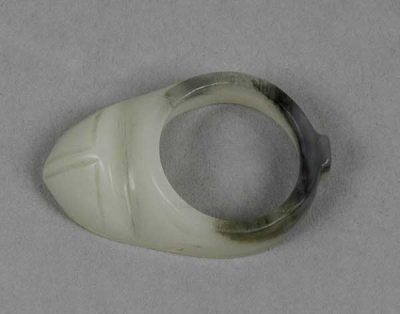Jade thumbring (1884.15.115)
 IndiaJade thumbring from India (or Pakistan), Asia. Part of the Pitt Rivers Museum Founding Collection. Given to the Museum in 1884.
IndiaJade thumbring from India (or Pakistan), Asia. Part of the Pitt Rivers Museum Founding Collection. Given to the Museum in 1884.
Archers used thumbrings when employing the 'Mongolian' arrow release method. This means drawing the string with a hooked right thumb. The name derives from its known use among the mounted warriors of the Mongol Empire of the 13th to the 15th centuries.
The notable feature of this piece is the marked groove on the elongated section, which covers the archer's thumb-pad. This helps the archer to hold the bowstring in tension. Although the white jade may have come from China, the ring is of the Indo-Persian style and, having been collected in the Indian Subcontinent, is probably of the classic Mogul period (1556-1707).





